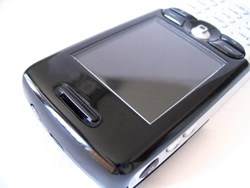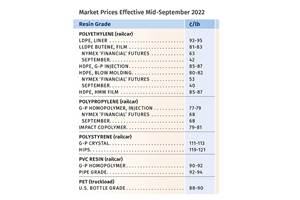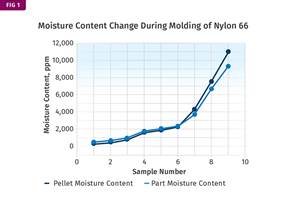'Extreme Performance' Copolymers Push the Boundaries for Polycarbonate
Already a familiar sight on European store shelves, the eye-catching appeal of "IML" is gaining traction among North American injection molders. The latest tooling and automation designs can handle the higher volumes needed here.
SABIC Innovative Plastics recently took the wraps off a family of six polycarbonate copolymers that it has been developing for more than a decade. Three new members of the family join three others that have been available for several years. It’s likely that more will be coming later. Based in Pittsfield, Mass., SABIC (sabic-ip.com) has “more than nine” of these copolymers, according to product marketing director Kim Choate. Some of these products started out being used only internally by SABIC as blending modifiers but are now being offered for sale on their own.
SABIC describes these copolymers as an “extreme performance portfolio” because each member is tailored to optimize a particular property or balance of properties that pushes beyond the previous processing/performance envelope for polycarbonate. The newest grades set new benchmarks for PC’s flow/ductility balance, heat resistance, and scratch resistance. They join three grades already on the market:
•Lexan EXL, introduced in 2001, is a copolymer of PC and silicone rubber that combines extreme ductility, chemical resistance, and impact retention under heat, humidity, and UV exposure. The newest grade in this line is Lexan EXL 8414, which contains up to 25% post-consumer recycled PC from 5-gal water bottles. This resin was featured in Motorola’s MOTO W233 Renew cell phone at last June’s NPE 2009 show in Chicago. SABIC also offers a special healthcare version of this copolymer called Lexan HPX. It offers enhanced flow, release, and autoclave performance at 121 C. Like other SABIC healthcare resins, it has been assessed for biocompatibility.
•Lexan SLX (2003) is an outdoor weatherable grade that minimizes yellowing and embrittlement. It needs no UV stabilizer or coating, because a portion of the polymer is activated by UV exposure to create a protective layer over the resin.
•Lexan FST (2007) is designed to comply with flame, smoke, and toxicity (FST) limits, as well as low heat release, for materials used in aircraft interiors, ships, and railroad cars. It is said to be the first clear material to meet FST requirements for aerospace uses without a waiver. A brand-new development in this series is a transparent grade that could be the first plastic to replace glass in aircraft interior applications such as large lighting domes, cabin dividers, and seating components. It will be aimed first at injection molding and later at profile extrusion. The product will be introduced at the Aircraft Interiors Expo this month in Hamburg, Germany, and at the SPE ANTEC meeting in Orlando, Fla.
HIGH FLOW PLUS DUCTILITY
One of the newly commercialized PC copolymers is Lexan HFD, which stands for “high-flow/ductile.” It provides very high flow—about 40% greater than standard PC—without the usual tradeoff of toughness or ductility for flowability that is typical in standard PC. For a given melt flow, Lexan HFD has 10° to 15° C lower ductile/brittle transition temperature than standard PC. This is achieved via incorporation of a soft block derived from castor oil, providing up to 5% bio-based content in the resin. Lexan HFD reportedly exhibits high ductility at temperatures down to -40 F. This, combined with high flow, allows molding thinner walls without risk of cracking during demolding. It also allows molding designs with sharp notches and corners without fear of breakage.
Lexan HFD processes at temperatures about 20° F lower than standard PC with the same ductility. This allows use of heat-sensitive additives and provides advantages in two-shot molding and in-mold decorating. In addition, the high flow of Lexan HFD provides superior optics with low birefringence due to reduced molded-in stresses. Higher flow also provides better distribution of glass fibers and 30% to 40% higher surface gloss than standard glass-filled PC, according to SABIC. “With 10% to 20% glass, it looks unfilled,” says Choate.
Lexan HFD is aimed at camera lenses, safety eyewear, medical housings, consumer electronics, bezels, and appliances. It is currently available in five grades, some with UV stabilizers. Glass-filled, flame-retardant, and food-contact grades are in development, as are blends with other SABIC engineering resins.
HIGH HEAT PLUS FLOW & IMPACT
Another newly released series is Lexan XHT (extra-high-temperature), which are clear, flame-retardant grades for use temperatures from 140 C to 195 C (284-383 F). They are said to offer UL relative thermal index (RTI) of 150 C, higher than polyarylate or other high-heat PCs (HHPC). They also boast improved blister resistance and exceptional clarity and color stability under UV exposure or heat aging, compared with polyarylate and HHPC. In addition, Lexan XHT boasts much higher impact and better impact retention after heat aging than HHPC, plus 30% greater flow length, better release, and better resistance to cracks and haze after metalization. Eco-compliant flame resistance is said to surpass that of PC and HHPC, providing UL 94V-0 at 1 mm and 5VA at 3 mm in clear and opaque colors.
SABIC sources say Lexan XHT has already achieved considerable success in automotive headlamp reflectors in Europe. Other target applications are industrial lighting, electrical fuses, and autoclavable medical components.
SCRATCH RESISTANCE PLUS BARRIER
Another unusual combination of properties distinguishes the third new copolymer series, Lexan DMX. First, it offers pencil hardness of 3H, three units higher than standard PC. That translates into better scratch resistance—without the expense of hard coating—for bezels, displays, touchscreens, and keypads. Extruded sheet and film of these resins can withstand rougher handling without surface marring. In profile scratch-depth tests, Lexan DMX scored 2.5 times better than standard PC and close to PMMA, though SABIC sources point out that Lexan DMX has better practical and notched impact than acrylic.
Another novel property of this copolymer is ammonia resistance, retaining clarity while standard PC becomes hazy. This could be valuable in applications for animal shelters, bathrooms, and chemical environments.
Added to the above are 5X greater moisture barrier and almost 20X higher oxygen barrier than standard PC. This suggests possible uses in medical vials.
Related Content
Prices of Volume Resins Drop
Price relief is expected to continue through the fourth quarter for nine major commodity and engineering resins, driven by widespread supply/demand imbalances.
Read MoreWhat's the Allowable Moisture Content in Nylons? It Depends: Part 2
Operating within guidelines from material suppliers can produce levels of polymer degradation. Get around it with better control over either the temperature of the melt or the barrel residence time.
Read MorePBT and PET Polyester: The Difference Crystallinity Makes
To properly understand the differences in performance between PET and PBT we need to compare apples to apples—the semi-crystalline forms of each polymer.
Read MoreResins & Additives for Sustainability in Vehicles, Electronics, Packaging & Medical
Material suppliers have been stepping up with resins and additives for the ‘circular economy,’ ranging from mechanically or chemically recycled to biobased content.
Read MoreRead Next
People 4.0 – How to Get Buy-In from Your Staff for Industry 4.0 Systems
Implementing a production monitoring system as the foundation of a ‘smart factory’ is about integrating people with new technology as much as it is about integrating machines and computers. Here are tips from a company that has gone through the process.
Read MoreProcessor Turns to AI to Help Keep Machines Humming
At captive processor McConkey, a new generation of artificial intelligence models, highlighted by ChatGPT, is helping it wade through the shortage of skilled labor and keep its production lines churning out good parts.
Read MoreUnderstanding Melting in Single-Screw Extruders
You can better visualize the melting process by “flipping” the observation point so that the barrel appears to be turning clockwise around a stationary screw.
Read More





























